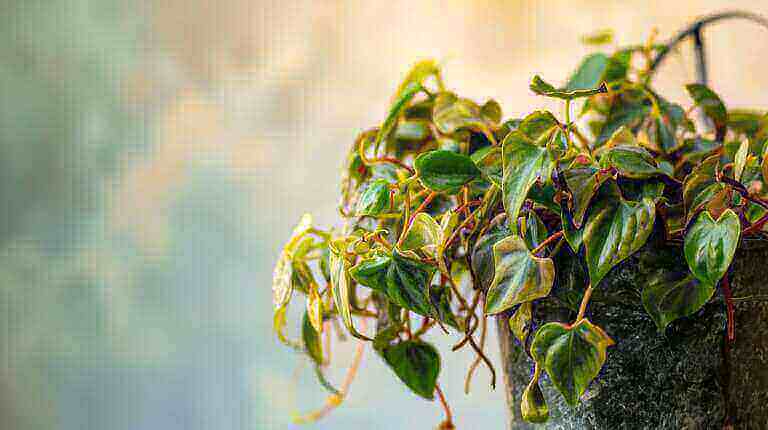Common Issues with Laceleaf Anthurium Plants and How to Fix Them
Laceleaf anthurium plants are a popular choice among plant enthusiasts due to their stunning flowers and vibrant foliage. However, like any plant, laceleaf anthuriums can face a range of common problems that can hinder their growth and beauty. In this article, I will discuss some of these issues and provide solutions to help you keep your laceleaf anthurium plants thriving.
Key Takeaways:
- Proper watering is crucial for laceleaf anthurium plants. Overwatering can lead to root rot, while underwatering can cause dehydration.
- Avoid over-fertilization and provide your plants with the right temperature range of 70 to 90 degrees Fahrenheit.
- Ensure your laceleaf anthurium plants receive indirect light and take effective measures to control common pests.
- Yellow leaves may indicate nutrient deficiency, which can be prevented by maintaining optimal watering, humidity, and soil conditions.
- Regular care and attention to these common issues will help your laceleaf anthurium plants thrive and display their beautiful flowers and foliage.
Improper Watering
Improper watering is one of the common issues that laceleaf anthurium plants can face. It is important to understand the watering needs of these plants in order to keep them healthy and prevent problems such as root rot and leaf blight. Overwatering can lead to the roots becoming waterlogged and susceptible to fungal infections, while underwatering can cause dehydration and result in yellowing leaves.
To properly water laceleaf anthurium plants, it is recommended to wait until the top inch of soil feels dry before watering again. This allows the plant to absorb the necessary moisture without becoming waterlogged. Additionally, using well-draining soil and ensuring that the pot has proper drainage holes can help prevent water from stagnating around the roots.
Proper watering techniques can significantly improve the overall health of laceleaf anthurium plants. By maintaining the right balance and providing adequate moisture, you can help prevent common watering issues and promote the growth and longevity of these beautiful plants.
Fertilization Problem and Improper Temperature
Laceleaf anthurium plants can face issues related to fertilization and temperature. Over-fertilization can result in leaf burn and hinder flower production, while improper temperature can cause the leaves to yellow and droop. It is crucial to understand the correct approach to fertilization and maintain the appropriate temperature range for these tropical plants.
Fertilization Problem
Over-fertilization can harm laceleaf anthurium plants, leading to leaf burn and adverse effects on their overall health. When applied in excess, fertilizers can cause an overload of nitrogen, resulting in leaf scorch and discoloration. To avoid such issues, it is important to use fertilizers in moderation and follow the recommended dosage instructions provided by reputable sources.
Additionally, nitrogen overdose can impede flower production in laceleaf anthurium plants. High nitrogen levels promote excessive vegetative growth at the expense of blooms. Therefore, it is recommended to use a balanced fertilizer formula that contains equal amounts of nitrogen, phosphorus, and potassium (NPK) to support healthy growth and flowering.
Improper Temperature
Laceleaf anthurium plants thrive in tropical environments and prefer temperatures ranging from 70 to 90 degrees Fahrenheit (21 to 32 degrees Celsius). Any significant deviations from this temperature range can have detrimental effects on the plants. Extreme heat or cold can cause the leaves to turn yellow and droop.
To maintain the ideal temperature for laceleaf anthurium plants, it is advisable to place them in a location with consistent room temperature, away from drafts or direct exposure to heating or cooling sources. Providing a humid environment can also help these plants thrive, as they appreciate moist conditions that mimic their natural habitat.
| Fertilization Problem | Improper Temperature |
|---|---|
| Over-fertilization | Extreme heat or cold |
| Leaf burn | Yellowing and drooping leaves |
| Nitrogen overload | |
| Reduction in flower production |
By addressing the fertilization problem and providing the proper temperature conditions, laceleaf anthurium plants can thrive and exhibit vibrant foliage and beautiful flowers. It is essential to monitor their nutrient intake and environmental conditions to ensure their long-term health and well-being.
Improper Light and Pests
Laceleaf anthurium plants require the right amount of light to thrive, and improper light conditions can lead to various issues. Direct sunlight can be detrimental to these plants, causing sunburnt leaves, yellowing, and bleached tips. To ensure the optimal growth of your laceleaf anthurium plants, it is important to provide them with indirect light. Place them near a window where they can receive bright, filtered light without being exposed to direct sunlight. This will help prevent leaf damage and maintain the plant’s overall health.
In addition to improper light, laceleaf anthurium plants can also fall victim to common pests. Mealybugs, aphids, thrips, and spider mites are some of the pests that can infest and damage these plants. These pests feed on the plant’s sap, leading to weakened growth, discolored leaves, and even plant death if left untreated. Regularly inspect your laceleaf anthurium plants for signs of pest infestation, such as small insects, white webs, or distorted leaves. If detected, take immediate action to control and eliminate the pests using appropriate organic or chemical treatments.
Preventive Measures to Ensure Healthy Plants
To prevent improper light and pest-related problems in your laceleaf anthurium plants, consider the following preventive measures:
- Place your plants in locations with indirect light, such as near a north-facing or east-facing window.
- Use curtains or blinds to filter out direct sunlight if your plants are placed near a south-facing or west-facing window.
- Regularly inspect your plants for pests and take immediate action at the first sign of infestation.
- Keep your plants clean by gently wiping the leaves with a damp cloth to remove dust and debris.
- Ensure proper air circulation around your plants to discourage pest buildup and maintain good plant health.
Yellow Leaves and Nutrient Deficiency
When it comes to laceleaf anthurium plants, yellow leaves can be a clear indication of nutrient deficiency. This issue can stem from various factors, such as overwatering, lack of humidity, poor soil conditions, or a shortage of essential nutrients like nitrogen, phosphorus, or potassium.
In order to prevent nutrient deficiencies and maintain the health of your laceleaf anthurium plants, it’s important to take a few key steps. Firstly, be mindful of your watering routine. Overwatering can lead to nutrient leaching and deprive the plants of the necessary elements for growth. Finding the right balance is crucial.
FAQ
What are some common issues with laceleaf anthurium plants?
Common issues with laceleaf anthurium plants include problems with watering, fertilization, temperature, light levels, and pests.
How can improper watering affect laceleaf anthurium plants?
Overwatering can lead to root rot and leaf blight, while underwatering can cause dehydration and yellowing leaves. It is important to find the right balance and water your laceleaf anthurium plants only when the top inch of soil is dry.
What problems can arise from fertilization and temperature issues?
Over-fertilization can lead to leaf burn and prevent flower production, while improper temperature can cause the leaves to turn yellow and droop. It is important to use fertilizers in moderation and provide laceleaf anthurium plants with the right temperature range of 70 to 90 degrees Fahrenheit.
How can improper light and pests affect laceleaf anthurium plants?
Direct sunlight can cause sunburnt leaves, yellowing, and bleached tips. Pests like mealybugs, aphids, thrips, and spider mites can infest and damage the plants. It is important to provide laceleaf anthurium plants with indirect light and take measures to control pests.
What can yellow leaves indicate in laceleaf anthurium plants?
Yellow leaves in laceleaf anthurium plants can indicate nutrient deficiency. This could be caused by overwatering, lack of humidity, poor soil conditions, or a lack of essential nutrients like nitrogen, phosphorus, or potassium. Regular watering, proper humidity levels, and the right soil conditions can help prevent nutrient deficiencies and keep laceleaf anthurium plants healthy.







